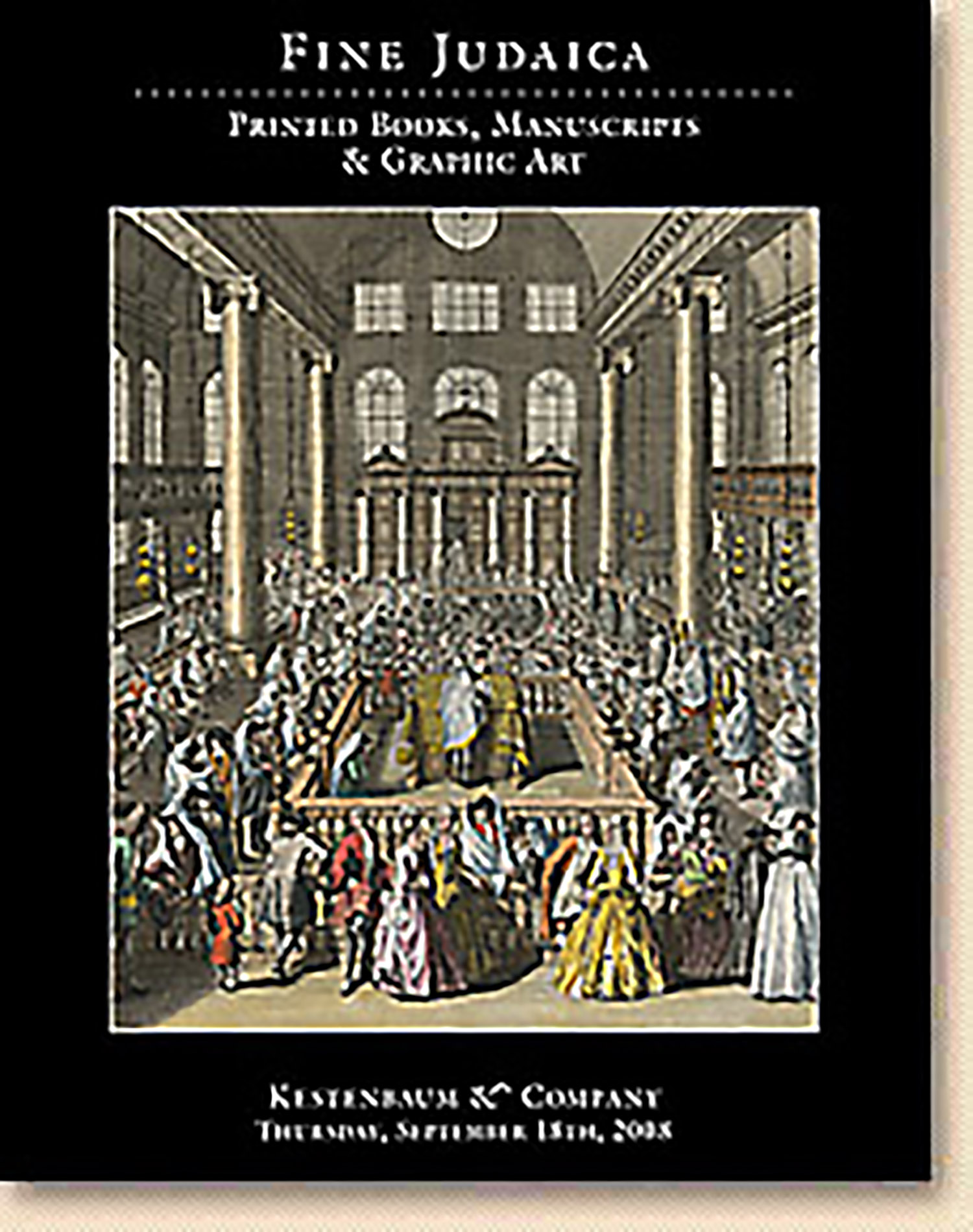Schwarz, Joseph. A Descriptive Geography and Brief Historical Sketch of Palestine. Translated by Isaac Leeser. Illustrated With Maps and Numerous Engravings

AUCTION 41 |
Thursday, September 18th,
2008 at 1:00
Fine Judaica: Printed Books, Manuscripts, & Graphic Art
Lot 25
(AMERICAN JUDAICA).
Schwarz, Joseph. A Descriptive Geography and Brief Historical Sketch of Palestine. Translated by Isaac Leeser. Illustrated With Maps and Numerous Engravings
Philadelphia: C. Sherman 1850
Est: $8,000 - $10,000
A VERY HANDSOME COPY IN THE ORIGINAL BOARDS.
The nineteenth century witnessed an unparalleled interest in the Holy Land due to new directions in Bible studies and the increasing popularity of visiting the Land itself. This new interest was reflected in a growing body of literature, consisting of geographies and travelogues. One such Hebrew work was Joseph Schwarz’s Tevu’oth ha-Aretz. Schwarz visited America as a rabbinical emissary in 1849 and stayed with his brother Abraham, a resident of New York. While there, he arranged for Isaac Leeser to translate and publish his Tevu’oth ha-Aretz, and it appeared the following year as “Descriptive Geography and Brief Historical Sketch of Palestine.” It was the first contribution to the subject by American Jews and “probably the most important Jewish work published in America up to that time” (JE, XI, 119). Leeser was cognizant of the pioneering status of the work and he proudly stated: “The execution of the whole [book] is the work of Jewish writers and artists, the drawings being executed by Mr. S. Shuster, a lithographer belonging to our nation.” The title page identifies the publisher as Abraham Hart, who financed the entire project (p. viii), but Leeser elsewhere stated that Schwarz’s brother was the publisher (Occident, vol. VII, p. 379). Leeser published the volume to “extend the knowledge of Palestine...and also to enkindle sympathy and kind acts for those of our brothers, who still cling to the soil of our ancestors.” See L. Sussman, Isaac Leeser and the Making of American Judaism, p. 176
